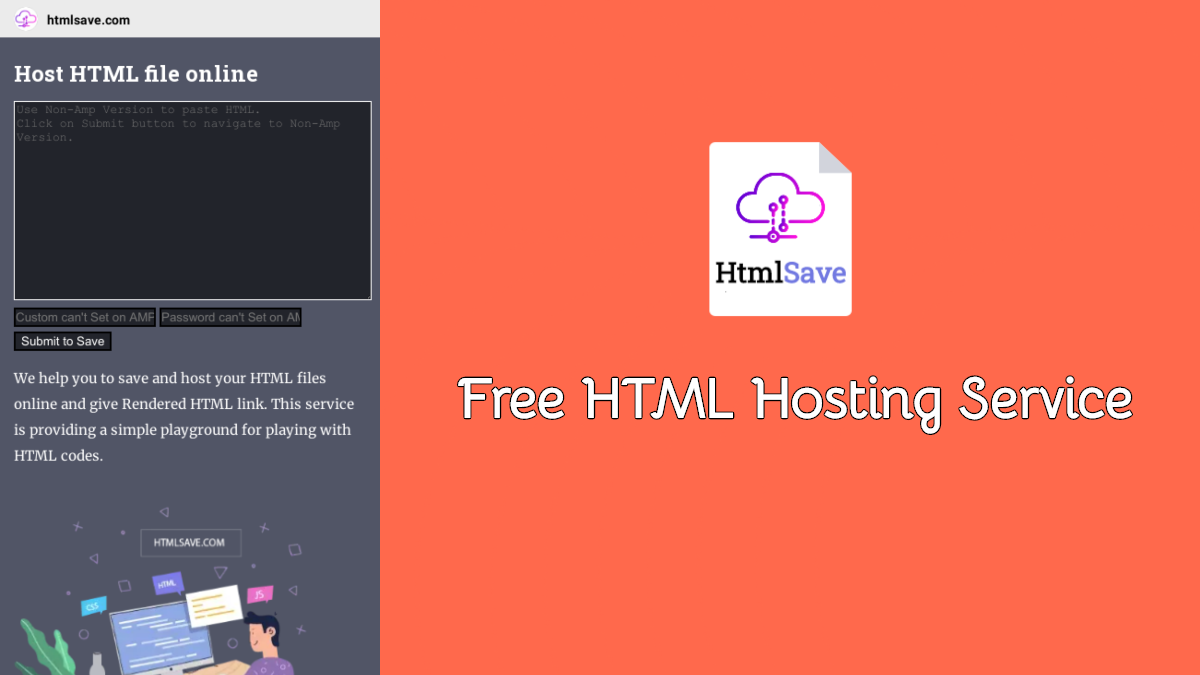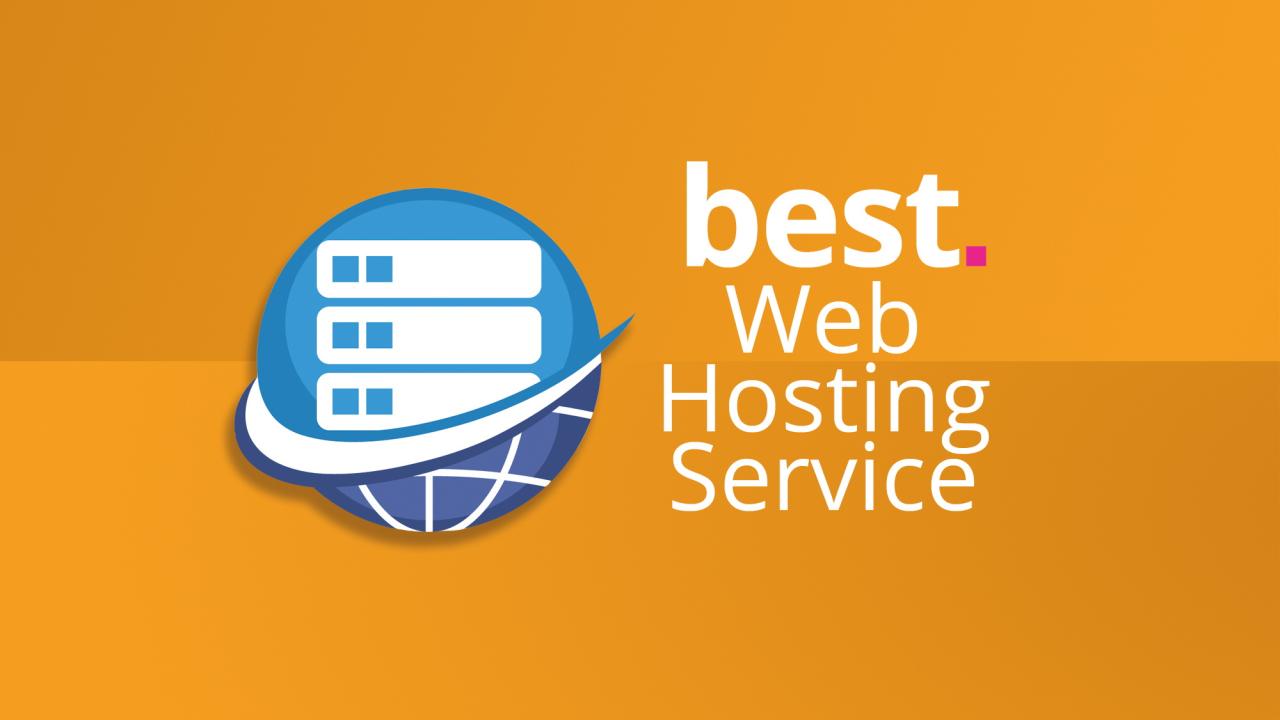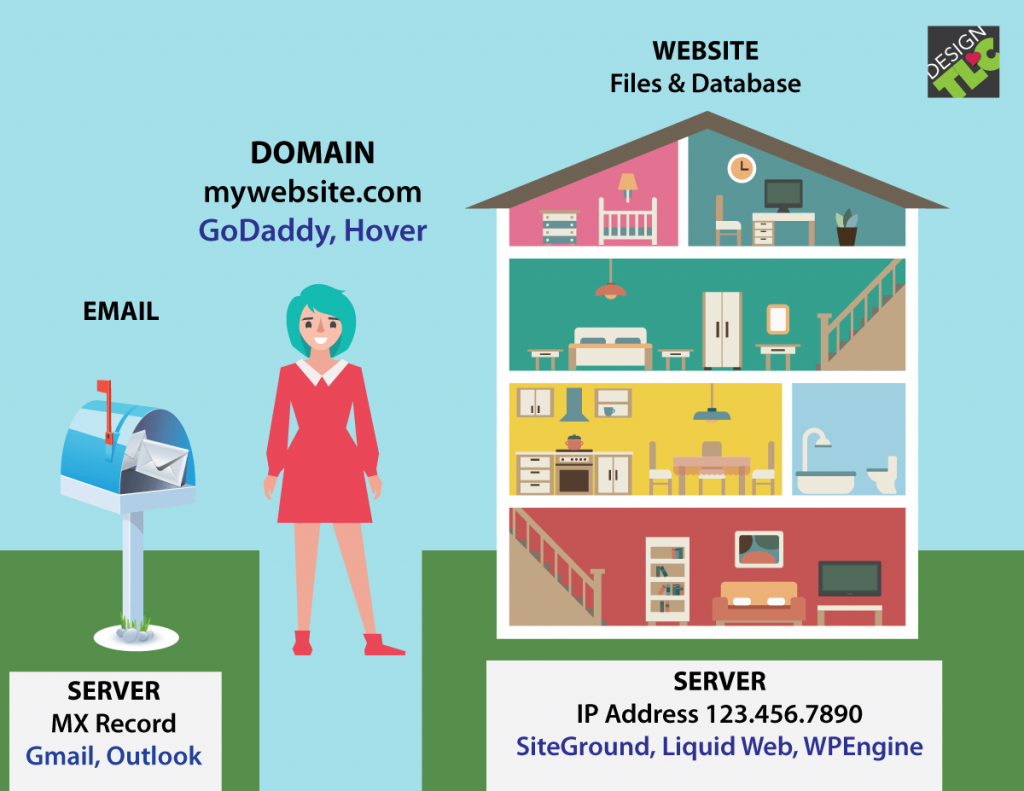Free HTML hosting provides a fantastic entry point for aspiring web developers and those looking to experiment with creating their own websites. This type of hosting allows you to build and deploy basic HTML websites without incurring any upfront costs. While it offers an accessible starting point, it’s important to understand the limitations and differences compared to paid hosting options.
Free HTML hosting platforms typically provide limited resources, such as storage space and bandwidth, which might restrict website functionality and performance. Additionally, they may include advertisements or impose restrictions on website features. However, for simple static websites or learning purposes, free hosting can be a valuable tool.
Types of Free HTML Hosting
Free HTML hosting services offer a convenient way to publish websites without incurring upfront costs. However, they often come with limitations in terms of features, resources, and control. Understanding the different types of free HTML hosting is crucial for choosing the right option for your needs.
Types of Free HTML Hosting Services
Free HTML hosting services can be broadly categorized into the following types:
- Free Web Hosting with Advertisements: This is the most common type of free hosting. Providers offer free hosting in exchange for displaying advertisements on your website. While this can be a good option for personal websites or simple projects, it can be disruptive to the user experience and may not be suitable for professional websites.
- Free Web Hosting with Limited Features: These services offer basic hosting features, such as file storage and FTP access, but often limit the amount of disk space, bandwidth, and other resources available. They may also restrict the use of certain features, such as email accounts or databases.
- Free Subdomain Hosting: This type of hosting allows you to create a website on a subdomain of the hosting provider’s domain (e.g., yourwebsite.freehost.com). This can be a good option for testing websites or building a portfolio, but it may not be suitable for businesses or projects that require a custom domain.
- Free Trial Hosting: Some hosting providers offer free trials of their paid hosting plans. These trials typically last for a limited period (e.g., 14 days or 30 days) and offer full access to the features of the paid plan. This can be a good option for evaluating a hosting provider before committing to a paid plan.
Comparison of Features and Limitations
| Type | Features | Limitations | Target Audience | Examples |
|---|---|---|---|---|
| Free Web Hosting with Advertisements | Free hosting, basic features | Advertisements displayed on your website, limited resources, restricted features | Personal websites, simple projects, hobbyists | 000webhost, Freehostia, AwardSpace |
| Free Web Hosting with Limited Features | Free hosting, basic features | Limited resources, restricted features, limited bandwidth, low uptime | Personal websites, simple projects, beginners | ByetHost, FreeWebHosting.com, WebStarts |
| Free Subdomain Hosting | Free hosting, subdomain, basic features | Limited resources, restricted features, subdomain name | Testing websites, portfolio websites, beginners | GitHub Pages, Wix, Weebly |
| Free Trial Hosting | Full features of paid plan | Limited duration, may require payment information | Evaluating hosting providers, testing paid plans | HostGator, Bluehost, GoDaddy |
Popular Free HTML Hosting Platforms
- GitHub Pages: This platform offers free hosting for static websites, allowing you to deploy your website directly from a GitHub repository. It’s popular for open-source projects, personal portfolios, and documentation websites.
- Wix: This platform provides a drag-and-drop website builder with free hosting options. It offers a wide range of templates and features, but the free plan includes Wix ads and limited storage and bandwidth.
- Weebly: Similar to Wix, Weebly offers a free website builder with hosting. It provides a user-friendly interface and a variety of templates, but the free plan comes with Weebly branding and limited features.
- 000webhost: This platform offers free web hosting with advertisements, providing basic features and limited resources. It’s a good option for simple websites or personal projects.
- Freehostia: This platform offers free web hosting with advertisements, providing a variety of hosting plans with different features and resources. It’s a good option for personal websites or small businesses.
Finding Reliable Free HTML Hosting
Finding a reliable free HTML hosting service can be challenging. Many providers offer free plans, but not all are created equal. It’s crucial to choose a service that meets your needs and provides the necessary features and reliability for your website.
Factors to Consider When Choosing a Free HTML Hosting Provider
When evaluating free HTML hosting providers, it’s essential to consider various factors to ensure you select a service that meets your needs and provides a reliable platform for your website.
- Storage Space and Bandwidth: Free hosting plans often have limited storage space and bandwidth. Determine the amount of storage and bandwidth you require based on your website’s content and expected traffic. Consider factors such as the size of your website’s files, including images and videos, and the number of visitors you anticipate.
- Uptime and Performance: Website uptime is crucial for user experience and search engine optimization (). Choose a provider with a proven track record of high uptime and fast loading times. Consider factors such as server location, network infrastructure, and the provider’s overall reputation.
- Features and Tools: Evaluate the features and tools offered by the free hosting provider. Some essential features include a control panel for managing your website, support for FTP access, email accounts, and basic security measures.
- Customer Support: Reliable customer support is essential for resolving any issues or questions you may have. Look for providers that offer 24/7 support via email, phone, or live chat.
- Security Measures: Security is crucial for protecting your website and data from malicious attacks. Choose a provider that offers basic security measures such as firewalls, malware scanning, and regular backups.
Tips for Identifying Reputable and Reliable Free Hosting Services
Identifying reputable and reliable free hosting services requires thorough research and careful evaluation. Consider these tips to make an informed decision:
- Read Reviews and User Feedback: Explore online reviews and user feedback from other users who have experience with the hosting provider. Look for reviews on reputable websites such as Trustpilot, SiteJabber, and G2.
- Check the Provider’s Website and Reputation: Evaluate the provider’s website for professionalism and trustworthiness. Check their website design, content, and contact information. Look for information about their company, services, and customer support.
- Consider the Provider’s Terms of Service: Carefully review the provider’s terms of service before signing up. Pay attention to clauses related to bandwidth limitations, storage restrictions, uptime guarantees, and security measures.
- Look for Providers with a Good Track Record: Choose a provider that has a history of providing reliable and consistent service. Consider factors such as their uptime statistics, customer satisfaction ratings, and industry recognition.
Importance of Reading Reviews and User Feedback
Reading reviews and user feedback is crucial for identifying reputable and reliable free hosting services. Reviews provide valuable insights into the provider’s performance, customer support, and overall reliability.
- Real-World Experiences: Reviews offer real-world experiences from users who have used the hosting service. They provide insights into the provider’s strengths and weaknesses, including uptime, performance, customer support, and security.
- Unbiased Opinions: Reviews are often unbiased opinions from users who have no affiliation with the hosting provider. This provides a more objective perspective on the service’s quality and reliability.
- Red Flags: Negative reviews can highlight potential red flags, such as poor customer support, frequent downtime, or security breaches.
Setting Up a Free HTML Hosting Account
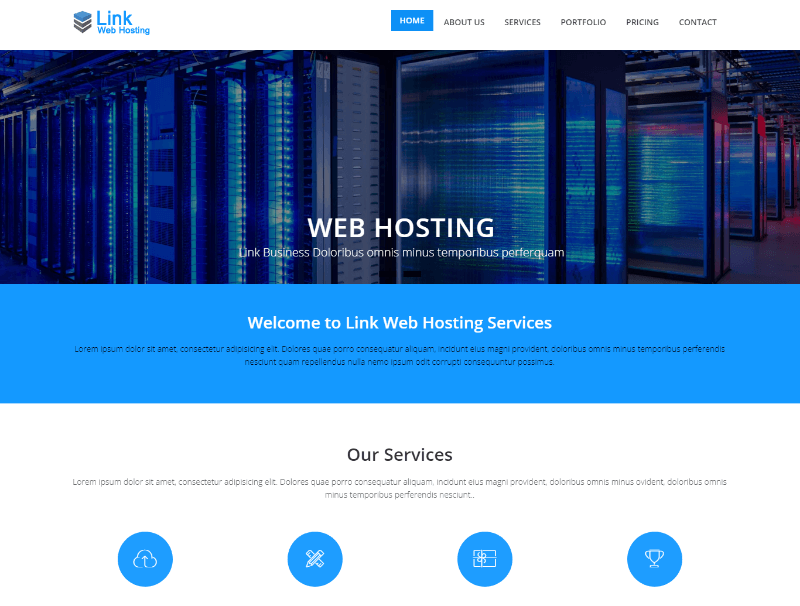
Setting up a free HTML hosting account is a straightforward process that allows you to bring your website to life without any upfront costs. This guide provides a step-by-step walkthrough of the process, covering everything from account creation to website configuration.
Choosing a Free Hosting Provider
Selecting the right free hosting provider is crucial for a successful website launch. Consider factors like storage space, bandwidth, and features offered by different providers. Look for providers with a good reputation, reliable uptime, and a user-friendly interface.
Creating an Account
Once you’ve chosen a free hosting provider, follow these steps to create an account:
- Visit the provider’s website and locate the “Sign Up” or “Create Account” button.
- Fill out the registration form, providing your email address, username, and password.
- Agree to the provider’s terms of service and privacy policy.
- Verify your email address by clicking the link in the confirmation email sent by the provider.
Uploading HTML Files
After successfully creating your account, you’ll need to upload your website’s HTML files to the server. Most free hosting providers offer a file manager or FTP (File Transfer Protocol) client for this purpose.
- File Manager: This web-based tool allows you to upload files directly from your computer through a user-friendly interface. It usually involves browsing your computer’s file system and selecting the files you want to upload.
- FTP Client: FTP clients are software programs that connect to your hosting server and allow you to transfer files. Popular FTP clients include FileZilla and Cyberduck. To use an FTP client, you’ll need the server’s address, username, and password, which are provided by your hosting provider.
Configuring Your Website
Once your HTML files are uploaded, you need to configure your website. This involves setting up the home page, adding links, and customizing the website’s appearance.
- Home Page: Your home page is the first page visitors see when they access your website. It should clearly introduce your website’s purpose and provide links to other important pages.
- Links: Links connect different pages of your website, allowing visitors to navigate between them. Ensure your links are accurate and functional.
- Customization: You can customize your website’s appearance using CSS (Cascading Style Sheets). CSS allows you to control elements like fonts, colors, and layout.
Domain Names
A domain name is your website’s address on the internet. It’s what people type into their web browser to access your site. While free hosting providers may offer a subdomain (e.g., yourwebsite.freehost.com), registering a custom domain name (e.g., yourwebsite.com) is highly recommended.
- Registering a Domain Name: You can register a domain name through domain registrars like GoDaddy, Namecheap, or Google Domains. Choose a domain name that is relevant to your website’s content and easy to remember.
- Connecting Your Domain to Your Hosting: After registering a domain name, you need to connect it to your hosting account. This process involves updating your DNS (Domain Name System) settings, which are provided by your domain registrar and hosting provider.
Free HTML Hosting Limitations
Free HTML hosting services, while offering an attractive entry point for website development, come with inherent limitations that can impact performance, functionality, and security. Understanding these limitations is crucial for making informed decisions about choosing the right hosting solution for your needs.
Bandwidth and Storage Space Restrictions
Free hosting services often impose limits on the amount of data that can be transferred (bandwidth) and the storage space available for your website files. These limitations can hinder website performance and functionality.
- Bandwidth limits restrict the amount of data your website can transfer to visitors. If your website receives a large volume of traffic, exceeding the bandwidth limit can result in slow loading times, broken links, or even website downtime. This is particularly important for websites with multimedia content, such as videos or images, which require significant bandwidth.
- Storage space limitations restrict the amount of data you can store on your hosting account. This can limit the size of your website files, including images, videos, and databases. Exceeding the storage limit can lead to data loss or website malfunction. If you plan to host a large website with extensive multimedia content, free hosting may not be sufficient.
Feature Restrictions
Free hosting services often have limited features compared to paid hosting options. These restrictions can impact your website’s functionality and overall user experience.
- Limited features can include restricted access to email accounts, databases, and other essential tools. This can limit your ability to manage your website effectively, particularly if you require features such as email marketing or online forms.
- Limited control over server configuration can hinder your ability to optimize website performance and security. This can be a significant drawback if you require advanced features such as custom SSL certificates or specific software installations.
- Limited support can be a significant disadvantage for website owners who need technical assistance. Free hosting providers often offer limited or no customer support, which can make it difficult to resolve issues or get help with website maintenance.
Security Risks
Free hosting services often come with increased security risks due to shared hosting environments and limited security measures.
- Shared hosting environments expose your website to potential security threats from other websites hosted on the same server. If another website on the server is compromised, it could potentially affect your website as well.
- Limited security measures can make your website vulnerable to attacks such as malware, phishing, and data breaches. Free hosting providers may not offer advanced security features such as firewalls, malware scanning, or regular security updates.
Alternatives to Free HTML Hosting
While free HTML hosting offers a convenient starting point, it comes with limitations that may hinder your website’s growth and performance. Exploring alternative hosting options, including paid plans, can unlock greater flexibility, reliability, and features to enhance your online presence.
Paid hosting plans offer a range of benefits that free options often lack, including increased storage, bandwidth, security, and technical support. These advantages can significantly impact your website’s performance, reliability, and overall user experience.
Paid Hosting Plans
Paid hosting plans provide a more robust and reliable platform for your website. They offer a wider range of features and resources, including:
- Increased Storage and Bandwidth: Paid hosting plans typically provide significantly more storage space and bandwidth, allowing you to host larger websites with more content and handle increased traffic without performance issues.
- Enhanced Security Features: Paid hosting providers often offer advanced security features, such as firewalls, malware protection, and SSL certificates, to safeguard your website from cyber threats and protect sensitive user data.
- Dedicated Support: Paid hosting plans usually come with dedicated technical support, providing you with expert assistance to resolve any technical issues or answer your questions promptly.
- More Control and Flexibility: Paid hosting plans offer greater control over your website’s environment, including the ability to choose your preferred operating system, software, and configurations.
- Scalability and Performance: Paid hosting plans can be easily scaled to accommodate your website’s growth and traffic demands, ensuring optimal performance and reliability.
Shared Hosting
Shared hosting is a cost-effective option where multiple websites share the same server resources. While it’s generally more affordable than dedicated hosting, it can lead to performance issues if other websites on the server experience high traffic.
- Cost-Effective: Shared hosting is a budget-friendly option, making it suitable for small websites or those just starting out.
- Easy Setup: Shared hosting platforms are typically easy to set up and manage, requiring minimal technical expertise.
- Limited Resources: Shared hosting environments share resources, which can impact performance if other websites on the server experience high traffic.
- Security Concerns: Security can be a concern with shared hosting, as a compromise on one website could potentially affect others on the same server.
VPS Hosting
VPS hosting provides a virtualized server environment that offers more resources and control than shared hosting. While it’s more expensive than shared hosting, VPS hosting offers better performance and security.
- Improved Performance: VPS hosting provides dedicated resources, leading to better performance and responsiveness for your website.
- Increased Control: VPS hosting offers more control over the server environment, allowing you to customize settings and install specific software.
- Enhanced Security: VPS hosting provides a more secure environment, as your website is isolated from other websites on the server.
- Higher Cost: VPS hosting is more expensive than shared hosting, making it a less budget-friendly option.
Dedicated Hosting
Dedicated hosting provides a dedicated server exclusively for your website. It offers the highest level of performance, security, and control but comes with a significant cost.
- Ultimate Performance: Dedicated hosting provides unparalleled performance, as your website has access to all the server’s resources.
- Maximum Security: Dedicated hosting offers the highest level of security, as your website is isolated from other websites and potential threats.
- Complete Control: Dedicated hosting gives you complete control over the server environment, allowing you to customize every aspect of your website’s setup.
- High Cost: Dedicated hosting is the most expensive hosting option, making it suitable for high-traffic websites or those with specific performance and security requirements.
Cloud Hosting
Cloud hosting utilizes a network of servers to distribute your website’s resources, offering scalability, reliability, and performance.
- Scalability and Flexibility: Cloud hosting allows you to easily scale your website’s resources to accommodate traffic fluctuations and growth.
- High Availability: Cloud hosting ensures high availability, as your website is distributed across multiple servers, minimizing downtime.
- Cost-Effectiveness: Cloud hosting can be cost-effective, as you only pay for the resources you use.
- Technical Complexity: Cloud hosting can be more technically complex to manage compared to traditional hosting options.
Choosing the Right Hosting Solution
Selecting the appropriate hosting solution depends on several factors, including your budget, website traffic, technical expertise, and specific requirements.
“Consider your website’s current and future needs, including traffic volume, storage requirements, and security considerations, to make an informed decision.”
For small websites with limited traffic, shared hosting can be a cost-effective option. As your website grows, you can upgrade to VPS or dedicated hosting for enhanced performance and security. Cloud hosting offers scalability and reliability, making it suitable for websites with fluctuating traffic or those requiring high availability.
Best Practices for Free HTML Hosting
Free HTML hosting, while a budget-friendly option, often comes with limitations that can affect your website’s performance. To ensure your website runs smoothly and provides a good user experience, it’s crucial to follow best practices for optimizing performance and security.
Optimizing Website Performance
Optimizing website performance on free hosting platforms is crucial for ensuring a smooth user experience. Website speed directly impacts user engagement, conversion rates, and search engine rankings. Here are some techniques to improve your website’s performance:
- Minimize HTML, CSS, and JavaScript Files: Reduce the size of your website’s files by removing unnecessary code, compressing images, and using a content delivery network (CDN). Smaller file sizes lead to faster loading times.
- Optimize Images: Compress images without sacrificing quality using tools like TinyPNG or ImageOptim. This significantly reduces file sizes, resulting in faster page loads.
- Use a CDN: A CDN (Content Delivery Network) stores copies of your website’s files on servers located around the world. When a user accesses your website, they are served the files from the closest server, reducing latency and improving loading times.
- Enable Browser Caching: Configure your website to enable browser caching. This allows browsers to store copies of website files locally, reducing the need to download them repeatedly. This significantly speeds up page loading for returning visitors.
- Minimize HTTP Requests: Reduce the number of HTTP requests your website makes by combining CSS and JavaScript files, using image sprites, and optimizing website code. Fewer requests mean faster loading times.
Minimizing Bandwidth Usage
Bandwidth is the amount of data that can be transferred between your website and users. Free hosting often has limited bandwidth, so it’s essential to minimize usage to avoid exceeding your limits. Here are some techniques for minimizing bandwidth usage:
- Compress Images: Compressing images reduces file sizes, leading to lower bandwidth consumption.
- Use Lazy Loading: Lazy loading images only loads them when they are visible in the user’s browser window. This reduces the initial page load time and bandwidth usage.
- Optimize Videos: Use video compression techniques and consider hosting videos on a dedicated video platform like YouTube or Vimeo. This can significantly reduce bandwidth usage.
- Limit File Sizes: Avoid using large files, especially images and videos, to prevent excessive bandwidth consumption.
- Cache Static Content: Cache static content, such as images and CSS files, to reduce the number of times they are downloaded. This significantly minimizes bandwidth usage.
Securing Websites on Free Servers, Free html hosting
Security is paramount for any website, especially those hosted on free servers, which can be more vulnerable to attacks. Here are some tips for securing your website:
- Use Strong Passwords: Choose strong, unique passwords for your website and hosting account. A strong password includes a combination of uppercase and lowercase letters, numbers, and symbols.
- Keep Software Up to Date: Regularly update your website’s software, including WordPress, plugins, and themes, to patch security vulnerabilities.
- Use a Security Plugin: Install a security plugin like Wordfence or Sucuri to protect your website from malicious attacks.
- Enable Two-Factor Authentication: Add an extra layer of security by enabling two-factor authentication on your hosting account. This requires you to enter a code from your phone in addition to your password when logging in.
- Use HTTPS: Use HTTPS (Hypertext Transfer Protocol Secure) to encrypt the connection between your website and users. This protects sensitive information, such as login credentials and credit card details.
Final Review
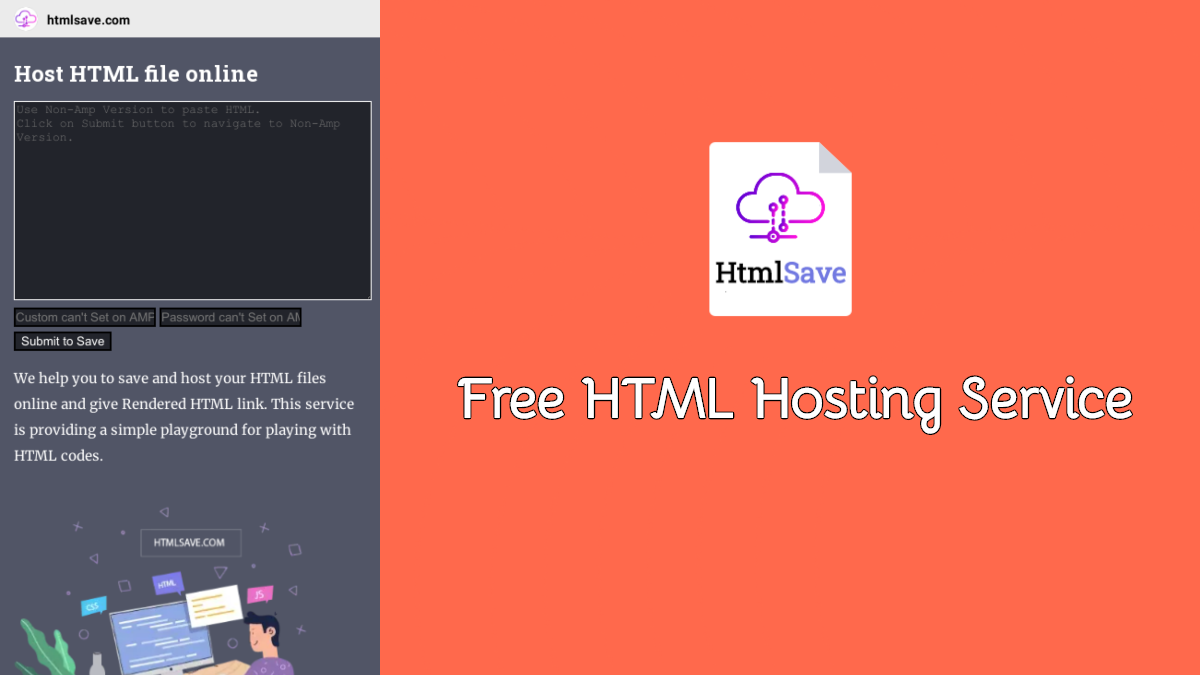
In conclusion, free HTML hosting presents a convenient and cost-effective way to dip your toes into web development. While it comes with limitations, it offers a valuable platform for learning, experimenting, and building basic websites. As your needs evolve and your website grows, exploring paid hosting options with more resources and flexibility might be necessary. Remember to carefully consider your requirements and budget before making a decision.

